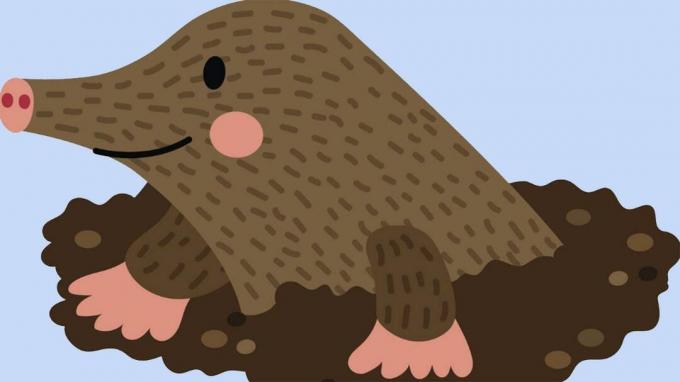Report Text: Definition, Elements, Characteristics, Structure, Examples, Problems
The type or genre of report text does have similarities with that of descriptive text. Where, whether it's a report or a descriptive text, both of them provide a direct description of an object or a person.
Table of contents
Definition of Report Text

Report Text is a report in the form of text that presents information about something, as it is from the results of research or systematic analysis.
Report text is one of the 13 types of writing in English.
Report Text is also included in the descriptive text which serves to explain something whether it is living things, objects, to general phenomena.
Meanwhile, descriptive text explains the phenomenon more specifically. For example, you will talk about bicycles. So in the descriptive text, you will refer to a certain type of bicycle such as a mountain bike complete with an explanation of its special characteristics.
Purpose of Report Text

The following are the objectives of Report Text, among others:
- Provide a variety of information to the reader about the object of the text itself.
- Provide information about something. In general, it will describe all classes of objects, both natural and artificial such as: mammals, rocks, planets, plants, cultures, countries in the region, transportation, or others.
Characteristics of Report Text

- Contains various scientific facts.
- Title text seems more general or less detailed.
- Wear Simple present tense.
Elements of Language / Language Feature

- Use common nouns. Example: A hunting dog, instead of using certain nouns like our dog. (Hunting dogs >< My dog)
- Use related verbs to describe objects. Such as to be [is, am, are: present], seem, look, taste and others.
- Some use of action verbs when describing behavior. For example: Rats cannot fly;
- The use of the timeless present tense to indicate the usual condition "often, usually, always".
- The use of technical terms / terms that include the text of the report itself. For example, regarding "music", the terms music in the text must exist.
- Use of paragraphs with topic sentences to organize a collection of information; repeated topic naming as the initial focus of the clause.
Generic Structure

Report Text has the same generic structure as Descriptive Text, including:
1. General Classification
In this section the contents are general statements that provide information about the object of the Report Text itself.
“It is stating the classification of general aspect of thing; animal, public place, plant, etc which will be discussed in general.”
2. Description
This section will generally explain the description of the situation or phenomenon that occurs. Whether it's parts, habits of nature, and behavior.
In essence, this one section describes the classification presented in a scientific way. However, the thing to remember is that the Report Text is not a news text, but a scientific factual text.
“It is describing the thing which will be discussed in detail; part by part, customs or deed for living creature and usage for materials”
Example of a short report text about plants

Mangrove Tree
A mangrove is a tropical marine tree. Mangroves have special aerial roots and salt-filtering tap roots which enable them to thrive in brackish water. Brackish water is salty but not as salty as sea water.
Mangrove trees are commonly planted and found in coastal areas. Mangroves can serve as walls of protection for natural disasters in coastal areas like tsunamis.
According to BBC News, healthy mangrove forests had helped save lives in the Asia disaster tsunami and people tended to respect these natural barriers even more, especially after the tsunami.
There are several species of mangrove tree found all over the world. Some prefer more salinity, while others like to be very-close to a large fresh water source such as river.
Some prefer areas that are sheltered from waves. Some species have their roots covered with sea water every day during high tide.
Other species grow on dry land but are still part of the ecosystem. The Times of India reported that rare species of mangrove had been found and was also known as the looking-glass tree, probably because the leaves are silver-coated.
Mangroves need to keep their trunk and leave above the surface of the water. Yet they also need to be firmly attached to the ground so they are not moved by waves.
Any part of root that appears above the water flows oxygen to the plant under water surface. as the soil begin to build up, these roots procedure additional roots that become embedded in the soil.
Generic structures:
1. General classification: A mangrove is a tropical marine tree.
2. Description:
- Mangrove trees are commonly planted and found in coastal areas.
- There are several species of mangrove tree found all over the world.
- Mangroves need to keep their trunk and leave above the surface of the water.
Translate:
Mangrove Tree
Mangroves are tropical marine trees. Mangroves have special aerial roots and salt filtering roots that allow them to thrive in brackish water. This brackish water is salty but not as salty as sea water.
Mangrove trees are generally planted and found in coastal areas. Mangroves function as a protective wall for natural disasters in coastal areas such as tsunamis.
According to BBC News, healthy mangroves can save lives from the Asian tsunami disaster as well as people tend to appreciate this natural barrier more, especially after the tsunami occur.
There are several species of mangrove trees found throughout the world. Some prefer salinity, whereas others are very close to a large freshwater source such as a river.
Some like to grow in areas protected from waves. Some species are rooted in seawater.
Other species grow on dry soil but are still part of one ecosystem.
The Times of India reports that a rare species of mangrove has been discovered and is known as a tree that looks like glass, perhaps because of its silver-coated leaves.
Mangroves must keep their trunks and leave above the water surface.
But they also have to be firmly tied to the ground so that they are not moved by the waves. Any part of the roots that appear above the water will deliver oxygen to the plants below the water surface.
When the soil begins to accumulate, these roots will then add roots that are embedded in the soil.
General structure:
1. General classification: Mangroves are tropical marine trees.
2. Information:
- Mangroves are commonly planted and found in coastal areas.
- There are several species of mangrove trees that can be found throughout the world.
- Mangroves must keep their trunks and leave above the water surface.
See more examples in the article: 21 Sample Report Text Short and Meaning
Example of a Report Text
The following are some examples of questions from Report Text, including:

Ant-eaters are perhaps the most curious looking animals. Their long head and snout look like tubes, and they have no teeth at all.
Their front legs are very strong and armed with heavy curved claws with which they break open the nets of ants and termites and then, when the insects rush out, use their long, sticky tongues to lick them up at great speed.
True ant-eaters are found in the swamps and forests of central and South America. Scaly ant-eaters, or pangolins, are found in Africa and tropical Asia.
Various other insect-eating animals are sometimes called ant-eaters, although they really belong to other groups of animals.
One of them is the ant-bear, which lives on the plains of South and Central Africa. This has long, erect ears but short blunt claws, an almost hairless tail, yellow brown in color. Unlike the true ant-eaters, it has small teeth.
Choose the best answer based on the text above!
1. The text tells us ….
A. the story of ant-eaters
B. the report of ant-eaters
C. the discussion of ant-eaters
D. the description of ant-eaters
E. the explanation of ant-eater's body
2. From the passage above, we can conclude that….
A. all ants are friends of other insects
B. ants live in the disgusted places
C. ants are classified as predators
D. ants belong to the insect group
E. ants usually eat death animals
3. What is the ant-bear?
A. The animal has long, erect ears and small teeth
B. The animal looks like a pangolin.
C. The animal has no sticky tongue
D. The animal does not like to eat ants.
E. The animal belongs to the ants' group.
